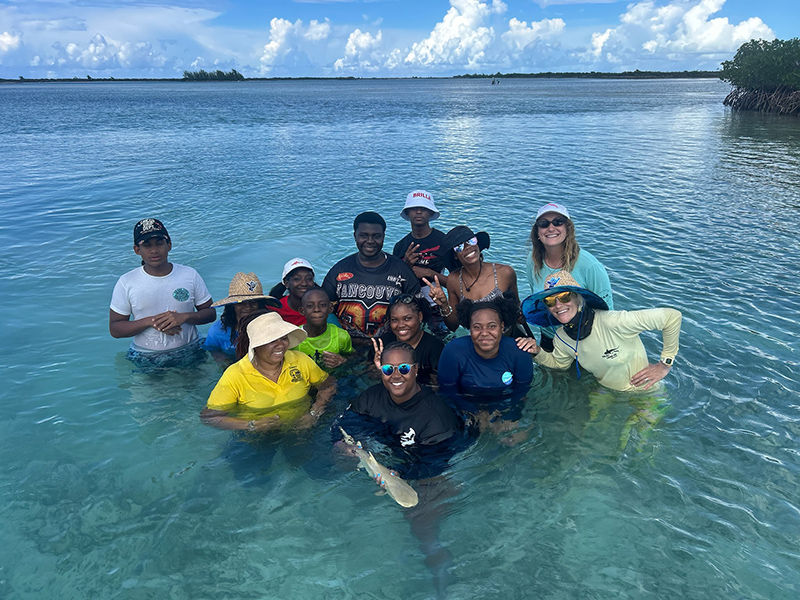Shark Diaries: From Inspiration to Expertise
- Sharks4Kids

- Jun 5, 2024
- 3 min read
Author: Jessica Dehn
Elasmobranch researchers at Florida State University, spanning a range of degrees and positions, shared how their admiration for sharks has shaped their careers and provided advice for those interested in pursuing jobs in marine science.
Name: Dr. R. Dean Grubbs
Current Position: Associate Director of Research, Research Faculty – Florida State University Coastal and Marine Laboratory
Education: BSc – University of Miami, PhD – College of William and Mary
How did you become interested in elasmobranch research?
“I grew up fishing in the Gulf of Mexico. At seven years old, I caught an Atlantic sharpnose shark, and I thought it was the coolest thing I’d ever seen. I told my parents then that I was going to be marine biologist and study sharks. Then, at ten years old, I was scalloping and was chased of the water by a hammerhead. It was such a powerful animal…I went through phases where I thought I was going to be a rockstar or a football player, but I always came back to being a marine biologist.”
What achievements are you most proud of?
“My students’ accomplishments, publishing papers, getting jobs, and being successful. Also, receiving the Graduate Faculty Mentor Award in 2020.”
How has the field changed since you started?
“There are many more people going into the field than available jobs, and funding for science has gone down.”
What advice do you have for early career professionals?
“It’s cheesy, but don’t be afraid to follow your dreams, and don’t let people tell you what you can and can’t do.”

Dr. Dean Grubbs using a measuring trough to measure a shark caught during a fishery-independent gillnet survey in the Florida Big Bend.
Name: Dr. Alyssa Andres
Current Position: Post-Doctoral Fellow
Education: BSc – Wellesley College, PhD – University of South Florida
How did you become interested in elasmobranch research?
“I always loved sharks, and I took a [shark] internship in South Africa after I graduated college. Two white sharks swam under the boat, and I had an instant adrenaline rush. They were beautiful, graceful, and powerful. I thought: ‘that’s it, I’m not doing anything else except studying sharks.’”
What achievements are you most proud of?
“Getting my PhD was huge. Also, starting the [Crystal River Bull Shark Project]. I’m at a point in my career where I trust myself, get to work with collaborators, and work in an area (conservation of species) that means a lot to me.”
How has the field changed since you started?
“It still needs work, but it’s more diverse; there are a lot more women. There’s also been more participation of minority groups on the forefront. It feels like the culture of this field is changing to be more open to teaching and inclusivity.”
What advice do you have for early career professionals?
“Read. Read lots and lots of papers. Put yourself out there, and don’t be afraid to reach out to researchers and ask questions. It’s never too early to start any of that. Try lots of things until you find what you love.”

Dr. Alyssa Andres working on a juvenile bull shark in Crystal River, FL.
Name: Emma Jackson
Current Position: First-Year PhD Student
Education: BSc – University of South Carolina
How did you become interested in elasmobranch research?
“There wasn’t a specific moment, but I always loved the ocean growing up. My family traveled to beaches a lot, and I would explore. I also loved aquariums.”
What achievements are you most proud of?
“Receiving the NOAA Hollings Scholarship. Also, keeping a high GPA and receiving scholarships through undergrad.”
How has the field changed since you started?
“It’s more diverse, and there are more women, [especially] in higher roles. It’s also much more competitive.”
What advice do you have for early career professionals?
“Don’t take ‘no’ for an answer. Take every opportunity that comes even if it’s not necessarily what you want to do. That’s usually where you’ll get the most random and useful skills.”

Emma Jackson with a bonnethead shark in Port St. Joe, FL





















